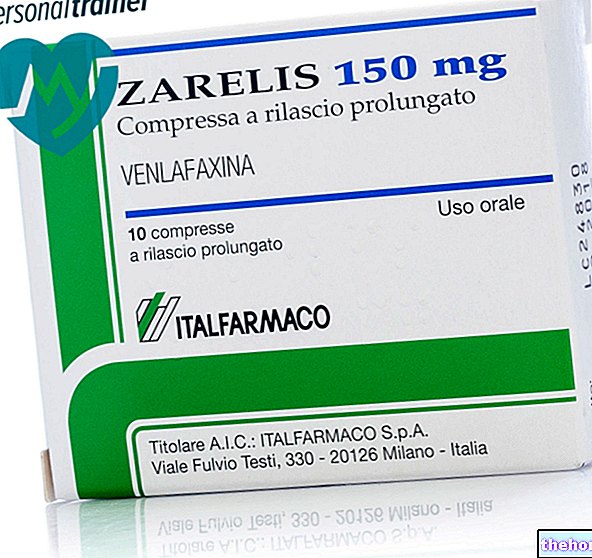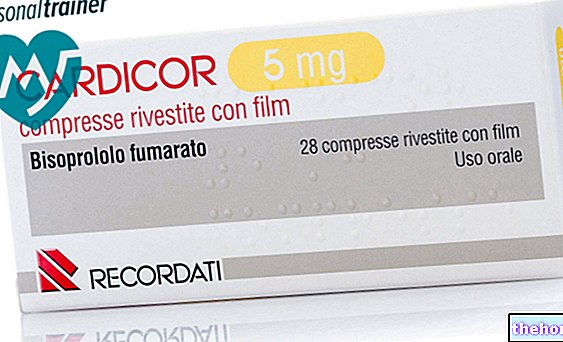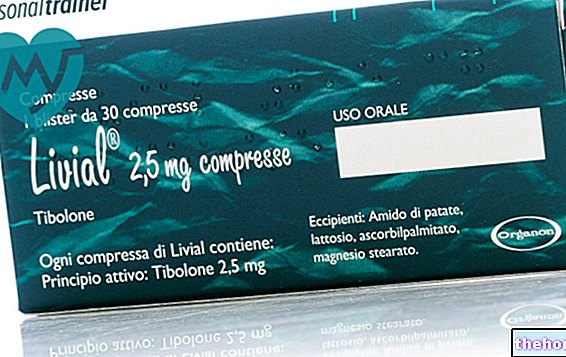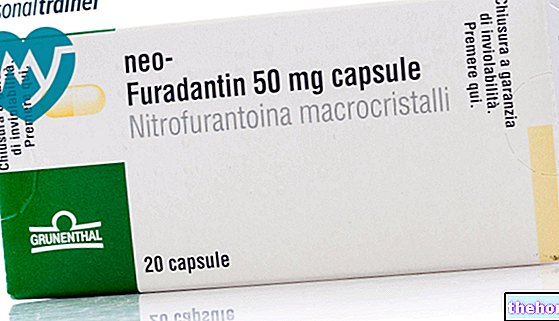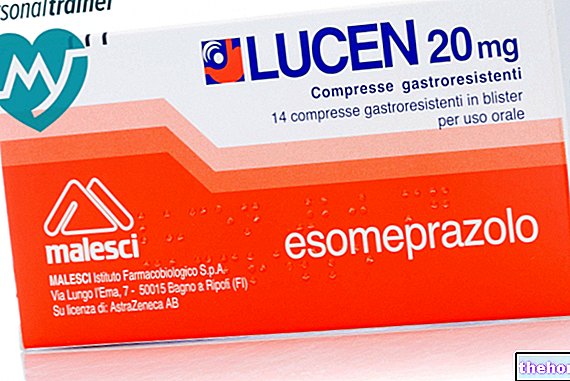Active ingredients: Sucralfate
ANTEPSIN 1g tablets
ANTEPSIN 20% oral suspension
Antepsin package inserts are available for pack sizes: - ANTEPSIN 1g tablets, ANTEPSIN 20% oral suspension
- ANTEPSIN 2g oral powder
Why is Antepsin used? What is it for?
PHARMACOTHERAPEUTIC CATEGORY:
Antiulcer - gastroprotector.
THERAPEUTIC INDICATIONS:
Gastric ulcer, duodenal ulcer, acute gastritis, chronic symptomatic gastritis, NSAID (non-steroidal anti-inflammatory) gastropathy, reflux esophagitis.
Contraindications When Antepsin should not be used
Hypersensitivity to the components.
Sucralfate should not be given to premature babies.
Generally contraindicated in pregnancy (see "SPECIAL WARNINGS").
Precautions for use What you need to know before taking Antepsin
The use of ANTEPSIN should be done with caution, avoiding prolonged treatments, in patients with renal insufficiency.
Avoid use in hemodialysis patients.
Interactions Which drugs or foods can modify the effect of Antepsin
Sucralfate can alter the bioavailability of other drugs including: cimetidine, ciprofloxacin, digoxin, ketoconazole, phenytoin, norfloxacin, ranitidine, tetracyclines and theophylline. The mechanism of these interactions appears to be non-systemic in nature and is presumably due to the binding of sucralfate with the concomitant drug in the gastrointestinal tract, therefore it is advisable to interpose an interval of at least two hours between the intake of ANTEPSIN and that of other drugs.
Warnings It is important to know that:
Cases of bezoar formation associated with sucralfate administration have been reported. The majority of these were represented by ICU patients and premature babies. Therefore, extreme caution should be exercised in the treatment of ICU patients especially if they are receiving enteral nutrition, or in patients with predisposing factors such as delayed gastric emptying.
A study conducted in France in infants who received sucralfate found that 73% of those treated showed severe digestive problems and 36% presented with an occlusive syndrome that required medical treatment.
The use of sucralfate in children is not recommended as safety and efficacy in the pediatric population have not been established.
Although studies conducted in animals have not highlighted teratogenic and embryotoxic effects of sucralfate, however, in the absence of clinical data on the safety of use of the drug during pregnancy and lactation, the use of ANTEPSIN in these conditions must be carefully evaluated by the doctor and reserved only for cases of actual need.
Keep this medicine out of the reach of children.
Dosage and method of use How to use Antepsin: Dosage
ANTEPSIN tablets: 1 tablet 4 times a day, unless otherwise prescribed.
ANTEPSIN suspension: one 5ml measuring spoon, 4 times a day, unless otherwise prescribed.
ANTEPSIN should be taken on an empty stomach, one hour before meals and at bedtime. The suspension must be shaken before use.
Overdose What to do if you have taken too much Antepsin
There is no experience of overdose in humans.
Side Effects What are the side effects of Antepsin
Prolonged use of the product can sometimes cause constipation.
Other less commonly reported effects are: gastrointestinal disturbances (diarrhea, dry mouth, flatulence, nausea, vomiting, stomach heaviness), rash, itching, dizziness, insomnia, headache, lower back pain.
Cases of hypersensitivity reactions such as urticaria, angioedema, respiratory distress and rhinitis have been reported.
Very rare cases of bezoar formation have been reported (see Special Warnings).
Compliance with the instructions contained in this leaflet reduces the risk of undesirable effects.
The patient is invited to report any undesirable effects to their doctor or pharmacist, even if not described in the package leaflet.
Expiry and Retention
For the expiry date, please refer to the information on the package.
This date refers to the product in intact packaging, properly stored.
Warning: do not use the medicine after the expiry date indicated on the package.
Deadline "> Other information
COMPOSITION
1g Tablets
Each tablet contains:
- Active ingredient: 1g sucralfate;
- Excipients: calcium carboxymethylcellulose, magnesium stearate, hydrogenated oil, microcrystalline cellulose, natural lemon flavor.
20% Oral suspension
100 ml of suspension contain:
- Active ingredient: 20g sucralfate;
- Excipients: methyl p-hydroxybenzoate sodium salt, propyl p-hydroxybenzoate sodium salt, monobasic sodium phosphate dihydrate, xanthan gum, anise flavoring, caramel flavoring, sodium saccharinate dihydrate, glycerol 85%, deionized water.
PHARMACEUTICAL FORM AND PACKAGING
Tablets - 40 tablets of 1g, for oral use;
Oral suspension - 200ml bottle of 20% suspension for oral use (1g / 5ml) with 5ml measuring spoon.
Source Package Leaflet: AIFA (Italian Medicines Agency). Content published in January 2016. The information present may not be up-to-date.
To have access to the most up-to-date version, it is advisable to access the AIFA (Italian Medicines Agency) website. Disclaimer and useful information.
01.0 NAME OF THE MEDICINAL PRODUCT -
ANTEPSIN 1 g tablets
ANTEPSIN 20% oral suspension
02.0 QUALITATIVE AND QUANTITATIVE COMPOSITION -
1 g Tablets: each tablet contains:
Active ingredient: sucralfate g 1.
20% Oral suspension: 100 ml contain:
Active ingredient: 20 g sucralfate.
03.0 PHARMACEUTICAL FORM -
Tablets, oral suspension
04.0 CLINICAL INFORMATION -
04.1 Therapeutic indications -
Gastric ulcer, duodenal ulcer, acute gastritis, chronic symptomatic gastritis, NSAID (non-steroidal anti-inflammatory) gastropathies, reflux esophagitis.
04.2 Posology and method of administration -
Antepsin tablets: one tablet 4 times a day, unless otherwise prescribed.
Antepsin suspension: one 5 ml measuring spoon 4 times a day, unless otherwise prescribed.
Antepsin should be taken on an empty stomach approximately one hour before meals and at bedtime.
The suspension must be shaken before use.
04.3 Contraindications -
Hypersensitivity to the components.
Sucralfate should not be given to premature babies.
Generally contraindicated in pregnancy (see also "use in pregnancy and lactation")
04.4 Special warnings and appropriate precautions for use -
Use with caution, avoiding prolonged treatments, in patients with renal insufficiency.
Avoid use in hemodialysis patients.
Cases of bezoar formation associated with sucralfate administration have been reported. The majority of these were represented by ICU patients and premature babies. Therefore, extreme caution should be exercised in the treatment of ICU patients especially if they are receiving enteral nutrition, or in patients with predisposing factors such as delayed gastric emptying.
A study conducted in France in infants who received sucralfate found that 73% of those treated showed severe digestive problems and 36% presented with an occlusive syndrome that required medical treatment.
The use of sucralfate in children is not recommended as safety and efficacy in the pediatric population have not been established.
Keep out of the reach of children.
04.5 Interactions with other medicinal products and other forms of interaction -
Sucralfate can alter the bioavailability of other drugs including: cimetidine, ciprofloxacin, digoxin, ketoconazole, phenytoin, norfloxacin, ranitidine, tetracyclines and theophylline. The mechanism of these interactions appears to be non-systemic in nature and is presumably due to the binding of sucralfate with the concomitant drug in the gastrointestinal tract, therefore it is advisable to interpose an interval of at least two hours between the intake of ANTEPSIN and that of other drugs.
04.6 Pregnancy and breastfeeding -
Although studies conducted in animals have not highlighted teratogenic and embryotoxic effects of sucralfate, however, in the absence of clinical data on the safety of use of the drug during pregnancy and lactation, the use of ANTEPSIN in these conditions must be carefully evaluated by the doctor and reserved only for cases of actual need.
04.7 Effects on ability to drive and use machines -
The drug does not affect the ability to drive and use machines.
04.8 Undesirable effects -
Prolonged use of the product may sometimes cause constipation. Other less commonly reported effects are: gastrointestinal disturbances (diarrhea, dry mouth, flatulence, nausea, vomiting, stomach heaviness), rash, itching, dizziness, insomnia, headache, pain lumbar.
Cases of hypersensitivity reactions such as urticaria, angioedema, respiratory distress and rhinitis have been reported. Very rare cases of bezoar formation have been reported (see section 4.4 Special warnings)
04.9 Overdose -
There is no experience of overdose in humans.
05.0 PHARMACOLOGICAL PROPERTIES -
05.1 "Pharmacodynamic properties -
Sucralfate acts therapeutically on gastric and duodenal ulcer, exerting its activity exclusively at the local level. Sucralfate in fact stratifies on the gastroduodenal mucosa and in particular establishes a selective bond with the proteins of the ulcerative crater, forming a protective barrier against the "further hydrochloric-peptic aggression and thus favoring the reparative processes of the altered mucosa. Furthermore, sucralfate stimulates the production of mucus and bicarbonates, inhibits to a large extent the "pepsin activity of gastric juice and" in vitro "has shown adsorbing activity on bile acids. Pharmacological and clinical trials unanimously demonstrate the efficacy of sucralfate against peptic ulcer, in inflammatory forms of the gastric mucosa and in irritative states secondary to the use of non-steroidal anti-inflammatory drugs.
05.2 "Pharmacokinetic properties -
Pharmacokinetic tests carried out in rats, dogs and monkeys using the labeled product have documented that the gastrointestinal absorption of sucralfate is extremely poor: in fact only minimal quantities of radioactivity were found in the blood and urine, while most of the drug was excreted in the faeces.
05.3 Preclinical safety data -
Sucralfate has very little toxicity. The administration of 12 g / kg orally and 4 g / kg subcutaneously or intraperitoneally in the rat did not result in any lethal episode. Even the prolonged treatment with 4 g / kg / day orally for 180 days in the rat did not show any toxic effects. Tests of teratogenesis and studies on reproductive function have not shown negative effects on embryo-fetal development.
06.0 PHARMACEUTICAL INFORMATION -
06.1 Excipients -
1g tablets: calcium carboxymethylcellulose; magnesium stearate; hydrogenated oil; microcrystalline cellulose; natural lemon flavoring.
Suspension: methyl p-hydroxybenzoate sodium salt; propyl p-hydroxybenzoate sodium salt; monobasic sodium phosphate dihydrate; xanthan gum; anise aroma; caramel flavor; sodium saccharinate dihydrate; glycerol 85%; deionized water.
06.2 Incompatibility "-
See 4.5.
06.3 Period of validity "-
Tablets: 60 months; oral suspension: 36 months
The indicated stability period refers to the product in intact packaging, correctly stored.
06.4 Special precautions for storage -
None.
06.5 Nature of the immediate packaging and contents of the package -
1 g Tablets: blister packs of coupled polyvinyl chloride-aluminum; cardboard box containing 40 tablets of 1g
20% Suspension: glass bottle; cardboard box containing a bottle of 200 ml at 20% (1g / 5ml), with 5ml measuring spoon
06.6 Instructions for use and handling -
See 4.2.
07.0 HOLDER OF THE "MARKETING AUTHORIZATION" -
LABORATORI BALDACCI S.p.A., Via S. Michele degli Scalzi, 73 - PISA.
Under license from CHUGAI PHARMACEUTICAL Co. Ltd. - Tokyo (Japan)
08.0 MARKETING AUTHORIZATION NUMBER -
-1 g tablets: A.I.C. 022803035
-20%: oral suspension A.I.C. 022803047
09.0 DATE OF FIRST AUTHORIZATION OR RENEWAL OF THE AUTHORIZATION -
Authorization renewal: 1/6/2000
10.0 DATE OF REVISION OF THE TEXT -
July 2003.

